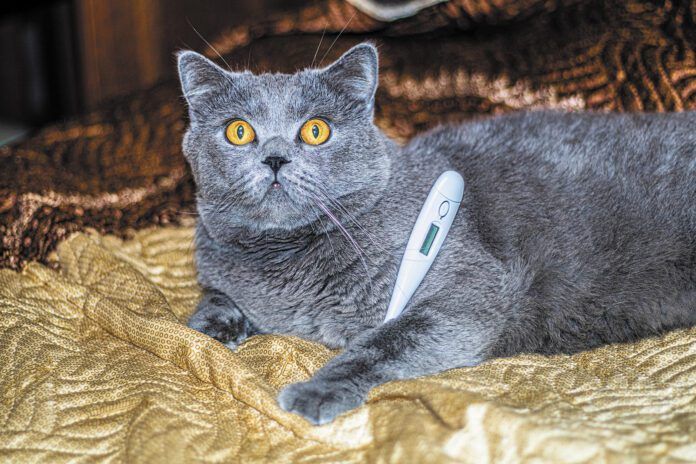The three most dreaded words for many a cat owner are “Take her temperature.” The startled, angry reaction of a cat having a thermometer pushed into her behind — or even placed in her ear — is not something people look forward to.
A third option is to use a thermometer that you can place in a cat’s “armpit.” A recent study involving 72 cats published in the journal Veterinary Sciences demonstrated that taking a cat’s temperature with an “underarm” thermometer (medically known as an axillary thermometer) goes faster and requires less restraint than a rectal thermometer — clearly a good thing since it is easier to assess the temperature of a calmer cat and therefore easier to diagnose a problem and treat it, if necessary.
But here’s the hitch: rectal readings remain the gold standard for ascertaining a cat’s body temperature. In fact, research has shown that rectal and ear readings on the same cat don’t even correlate well. “I never use an ear thermometer on sick patients unless they have had surgery in the hind end area,” says Tufts veterinary internist Michael Stone, DVM.
And while the manufacturer of the axillary thermometers used in the journal study referenced above says its device uses multiple sensors to arrive at an accurate temperature reading, it has not yet been proven scientifically. The company reports that its product “is undergoing clinical trials at several universities that are planning to publish a peer-reviewed study comparing the accuracy level to a rectal thermometer.” But what do you do in the meantime?
Choosing your device
Because you’ll get the most accurate reading with a rectal thermometer, that’s the best one to use — if your cat will accept it. For your safety, wear long sleeves and protective gloves. And, if possible, have someone there with you to hold, coo to, and reassure the cat while you insert the device into your pet’s rectum (after lubricating it with petroleum jelly). A normal temperature is anything between 100 and 102.5 degrees Fahrenheit.
If your pet absolutely will not accept a rectal thermometer to the point that she thrashes about, doesn’t let you do the procedure, and is absolutely beside herself, use a digital aural (ear) thermometer. Once the thermometer has been turned on and self-calibrates, insert it gently into your cat’s ear canal — at a 90-degree angle to her head. When it beeps, you will have a reading.
If your feline cannot tolerate that either, you can try the underarm route with an axillary thermometer, or better yet, take your cat to the doctor. “I’ve yet to see validation of axillary thermometers,” Dr. Stone says. “Having a potentially inaccurate reading is worse than no reading at all.”
If you’re on the fence about taking in your cat, consider that signs accompanying feline fever often include lethargy and rapid breathing or shivering.




